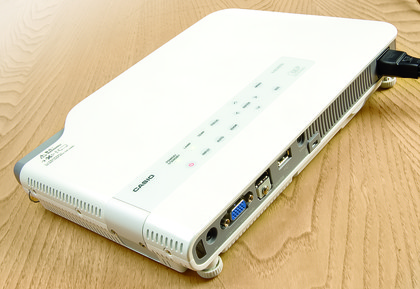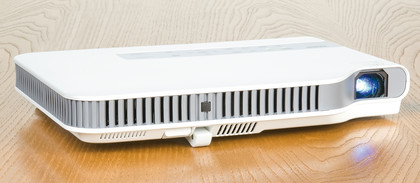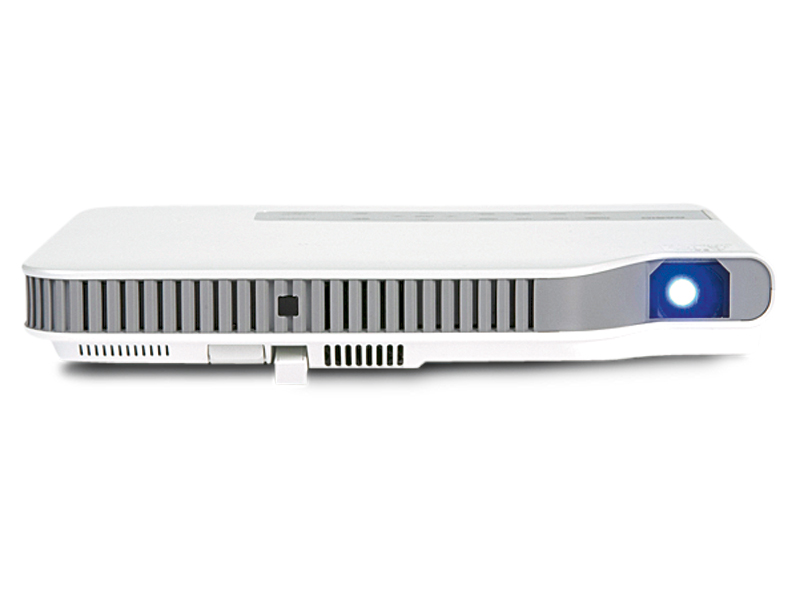TechRadar Verdict
For the boardroom or classroom use, Casio's XJ-A235 might fit the bill on account of its low running costs. But for plug-and-play gaming and home cinema applications, the XJ-A235 just doesn't cut the mustard
Pros
- +
Bright pictures
- +
20,000-hour lamp life
Cons
- -
Disappointing picture quality
- -
Noisy fan in high brightness modes
- -
Lack of home cinema connections
Why you can trust TechRadar
Casio's XJ-A235 is not a dedicated home cinema projector; it only has 720p (1,280 x 800) resolution, a single HDMI port and lacks professional calibration options, while employing only single-chip DLP technology.
Yet this lightbox might pique the interest of shoppers also looking at £1,000 models from the likes of Vivitek and Optoma, because of its cutting-edge lighting under the bonnet.
The backlight behind the 0.65-inch DLP chip takes the form of a blue laser. There's also a separate red LED light source, plus a filter that's used with the blue laser and some careful timing to reproduce the green element of the picture. LEDs and lasers respond to switching much faster than halogen bulbs and so there's no need for that annoyingly noisy colour wheel.
Another advantage of Casio's 'hybrid' approach is that a 20,000 hour life can be claimed for the lighting, versus the 3-4,000 hours quoted for the average projector lamp. And Casio's backlighting does have the benefit of running cooler, which should improve reliability.
There is a small fan, but although it's quieter than usual in the brightness-reducing 'eco' modes, it screams very loudly indeed when they're not used.
The XJ-A235 does deliver a bright picture – our Tech Labs measured it at 18.8fL, although the 1800:1 contrast ratio isn't too exciting.

And if you're used to the comprehensive socketry of large purpose-designed home cinema PJs, be prepared for a shock. The lack of rear-panel space dashes any hopes of flexible connections. Alongside the HDMI port, you get a 15-pin D-Sub terminal for the analogue VGA outputs of PCs and a 3.5mm socket that will accept stereo audio and composite video with a supplied cable (no component, hi-def or otherwise).
As with a lot of small form projectors, a speaker is built in. It's mono, and tiny, and sounds like an ant trying to clear its throat.
The XJ-A235 is quick to start and reasonably easy to install. It can be ceiling or desktop-mounted and caters for front and rear-projection. The 2x zoom and focusing can be controlled via the compact handset or a top-mounted collection of buttons. There's an auto-keystone (electronic, rather than optical) feature, too.
To align the picture with the screen when the unit is desktop-mounted, one of the feet is screw-adjustable, while the front foot can be raised or lowered, albeit rather coarsely.
Menus cover the essential picture tweaks, but nothing more. Annoyingly, they fill a significant portion of the screen and are not translucent. As a result, it's difficult to see the effects of any adjustment.
LCD throwback
Even in the lowest power 'eco 2' mode, the picture brightness is ample for a darkened room.
However, the very dark greys that pass for blacks are redolent of those LCD projectors of yesteryear. Flesh tones are not particularly natural, either, their presentation tending towards the pallid. Reproduction of deep blue also fares disappointingly, and so it would appear that Casio's innovative light source is affecting the colour gamut.
Even by the standards of a 720p projector resolution is lacklustre. The result is that the finer details of pristine Blu-ray transfers are masked somewhat. Take, for example, the starry exterior shots of Moon. No longer is the spacescape comprised of pinpricks of distant light against an inky blackness. Instead, all but the most prominent blur into uniformity.
To give another example, I thought the Boston skylines on the Edge of Darkness Blu-ray were rendered with little better than DVD clarity.
DLP's rainbow effect can be quite intrusive, too, especially with black and white material. Yet some vestiges of cinematic presentation are retained.

This may be a small machine, but it's capable of visuals on an impressive scale provided your room is big enough; the three-step light source enables you to adequately balance brightness, fan noise and power economy.
The picture processing may be unspecified, but motion is conveyed in a very filmic way. Auto-iris 'pumping' is mercifully absent, too.
For the boardroom or classroom, where a projector may be in constant use, Casio's XJ-A235 might fit the bill on account of its low running costs. Fed from a PC, the lacklustre picture fidelity won't be that troublesome. But even for just plug-and-play gaming and home cinema applications, the XJ-A235 just doesn't cut the mustard.
Follow TechRadar Reviews on Twitter: http://twitter.com/techradarreview
